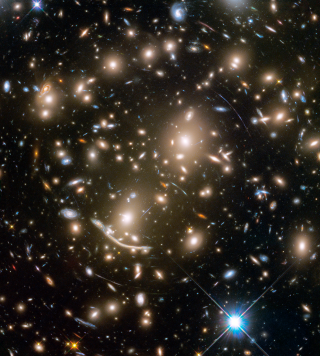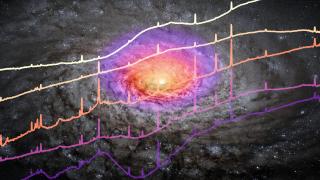García-Benito, R.; Zibetti, S.; Sánchez, S. F.; Husemann, B.; de Amorim, A. L.; Castillo-Morales, A.; Cid Fernandes, R.; Ellis, S. C.; Falcón-Barroso, J.; Galbany, L.; Gil de Paz, A.; González Delgado, R. M.; Lacerda, E. A. D.; López-Fernandez, R.; de Lorenzo-Cáceres, A.; Lyubenova, M.; Marino, R. A.; Mast, D.; Mendoza, M. A.; Pérez, E.; Vale Asari, N.; Aguerri, J. A. L.; Ascasibar, Y.; Bekerait*error*ė, S.; Bland-Hawthorn, J.; Barrera-Ballesteros, J. K.; Bomans, D. J.; Cano-Díaz, M.; Catalán-Torrecilla, C.; Cortijo, C.; Delgado-Inglada, G.; Demleitner, M.; Dettmar, R.-J.; Díaz, A. I.; Florido, E.; Gallazzi, A.; García-Lorenzo, B.; Gomes, J. M.; Holmes, L.; Iglesias-Páramo, J.; Jahnke, K.; Kalinova, V.; Kehrig, C.; Kennicutt, R. C.; López-Sánchez, Á. R.; Márquez, I.; Masegosa, J.; Meidt, S. E.; Mendez-Abreu, J.; Mollá, M.; Monreal-Ibero, A.; Morisset, C.; del Olmo, A.; Papaderos, P.; Pérez, I.; Quirrenbach, A.; Rosales-Ortega, F. F.; Roth, M. M.; Ruiz-Lara, T.; Sánchez-Blázquez, P.; Sánchez-Menguiano, L.; Singh, R.; Spekkens, K.; Stanishev, V.; Torres-Papaqui, J. P.; van de Ven, G.; Vilchez, J. M.; Walcher, C. J.; Wild, V.; Wisotzki, L.; Ziegler, B.; Alves, J.; Barrado, D.; Quintana, J. M.; Aceituno, J.
Bibliographical reference
Astronomy and Astrophysics, Volume 576, id.A135, 30 pp.
Advertised on:
4
2015
Journal
Citations
205
Refereed citations
193
Description
This paper describes the Second Public Data Release (DR2) of the Calar
Alto Legacy Integral Field Area (CALIFA) survey. The data for 200
objects are made public, including the 100 galaxies of the First Public
Data Release (DR1). Data were obtained with the integral-field
spectrograph PMAS/PPak mounted on the 3.5 m telescope at the Calar Alto
observatory. Two different spectral setups are available for each
galaxy, (i) a low-resolution V500 setup covering the wavelength range
3745-7500 Å with a spectral resolution of 6.0 Å (FWHM); and
(ii) a medium-resolution V1200 setup covering the wavelength range
3650-4840 Å with a spectral resolution of 2.3 Å (FWHM). The
sample covers a redshift range between 0.005 and 0.03, with a wide range
of properties in the color-magnitude diagram, stellar mass, ionization
conditions, and morphological types. All the cubes in the data release
were reduced with the latest pipeline, which includes
improvedspectrophotometric calibration, spatial registration, and
spatial resolution. The spectrophotometric calibration is better than 6%
and the median spatial resolution is 2.̋4. In total, the second
data release contains over 1.5 million spectra.
Based on observations collected at the Centro Astronómico Hispano
Alemán (CAHA) at Calar Alto, operated jointly by the
Max-Planck-Institut für Astronomie (MPIA) and the Instituto de
Astrofísica de Andalucía (CSIC).The second data release is
available at http://califa.caha.es/DR2
Related projects

Galaxy Evolution in Clusters of Galaxies
Galaxies in the universe can be located in different environments, some of them are isolated or in low density regions and they are usually called field galaxies. The others can be located in galaxy associations, going from loose groups to clusters or even superclusters of galaxies. One of the foremost challenges of the modern Astrophysics is to
Jairo
Méndez Abreu

Traces of Galaxy Formation: Stellar populations, Dynamics and Morphology
We are a large, diverse, and very active research group aiming to provide a comprehensive picture for the formation of galaxies in the Universe. Rooted in detailed stellar population analysis, we are constantly exploring and developing new tools and ideas to understand how galaxies came to be what we now observe.
Anna
Ferré Mateu

Nuclear Activity in Galaxies: a 3D Perspective from the Nucleus to the Outskirts
This project consists of two main research lines. First, the study of quasar-driven outflows in luminous and nearby obscured active galactic nuclei (AGN) and the impact that they have on their massive host galaxies (AGN feedback). To do so, we have been granted time with the Gran Telescopio CANARIAS (GTC) in the optical and near-infrared ranges
Cristina
Ramos Almeida